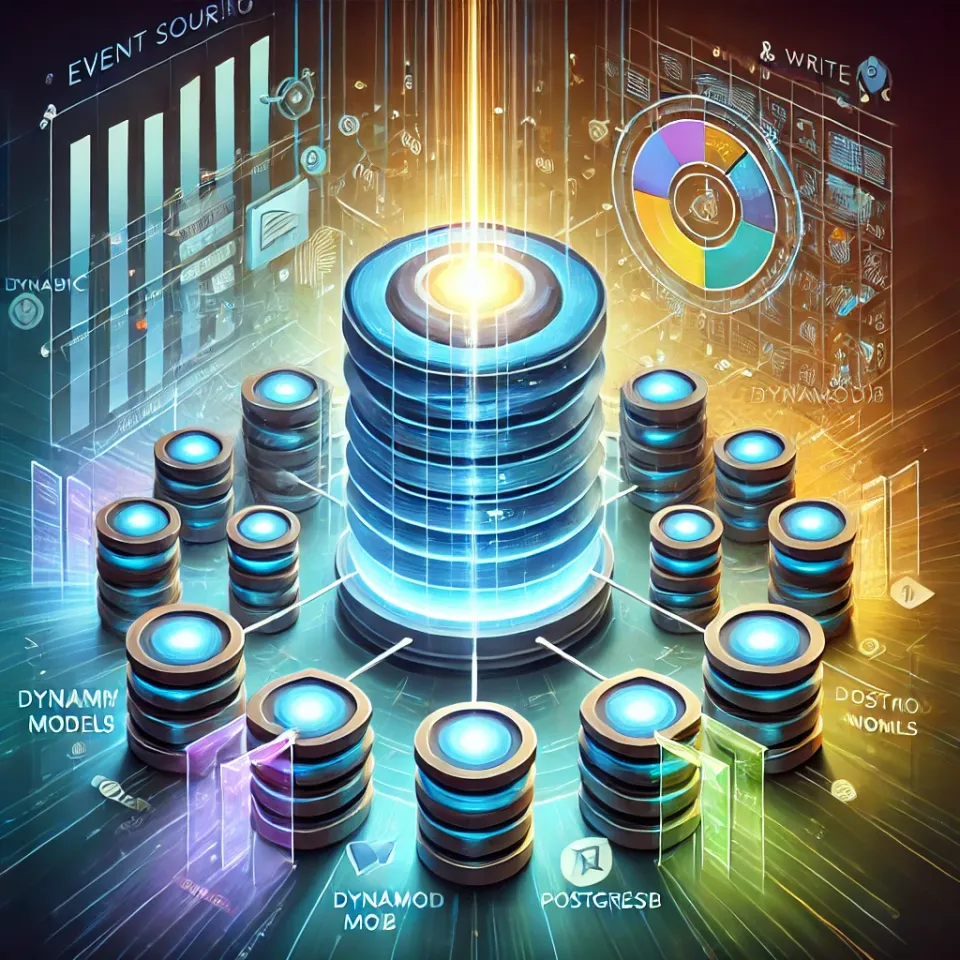Event Sourcing: Rethinking Traditional Data Models

In the rapidly evolving world of software development, designing systems that are robust, scalable, and adaptable is a priority. Event sourcing offers a compelling alternative to the traditional CRUD (Create, Read, Update, Delete) model, addressing limitations in scalability, flexibility, and concurrency.
Glossary of Key Terms
- CRUD: Create, Read, Update, Destroy. A traditional database model that works well for straightforward applications but struggles with complex domains.
- CQRS: Command and Query Responsibility Segregation. Separates read and write operations to improve performance and scalability.
- DDD: Domain-Driven Design. A methodology focusing on the core business domain.
- DTO: Data Transfer Object. Used for transferring data between processes or layers.
- DAL: Data Access Layer. Interface for interacting with the database.
Traditional CRUD Model: Simplicity at a Cost
CRUD is a widely-used approach due to its simplicity and ease of implementation. However, its limitations become apparent as systems grow:
Pros:
- Straightforward to implement.
Cons:
- Concurrency Issues: Locked tables can lead to race conditions during multiple updates.
- Anemic Design: Returns only current state, making audits and debugging challenging.
- Hard to Change: Schema changes often require migrations, complicating maintenance.
Event Sourcing: A New Paradigm
Event sourcing rethinks how data is stored and accessed. Instead of persisting the current state, it records all changes (events) to the system, allowing the current state to be reconstructed from these events.
Key Features:
- Source of Record: The event log is the definitive source of truth.
- Immutable Data: Events are append-only, ensuring a clear history of changes.
- Parallel Models: Enables the creation of multiple read models tailored for specific use cases.
Benefits:
- Flexibility: Adheres to SOLID design principles, making it easier to adapt and extend the system.
- Rich Data Models: Robust event data eliminates the need for frequent model or schema changes.
- Improved Concurrency: Append-only architecture minimizes conflicts in collaborative domains.
Use-Cases:
- Systems with high read/write ratio.
- Collaborative domains requiring fine-grained control over operations.
- Applications with evolving business logic or integration with external systems.
Anti-Use-Cases:
- Simple domains where CRUD suffices.
- Scenarios where added complexity outweighs benefits.
Event Sourcing with CQRS
Combining event sourcing with CQRS enhances system scalability and performance by separating read and write operations:
CQRS Advantages:
- Scalability: Independently scale read queries or write commands.
- Enhanced Security: Restricts read and write operations to separate interfaces.
- UI Responsiveness: Improves performance by optimizing read operations for specific views.
CQRS Challenges:
- Increased complexity in maintaining consistency.
- Read queries must be updated as the write model evolves.
Implementation Considerations:
- Use CQRS selectively for complex portions of the system.
- Write models should be append-only streams of events.
- Read models should return optimized DTOs for UI rendering.
Database Potentials
Selecting the right database is critical for event sourcing:
- DynamoDB: Scalable NoSQL database.
- MongoDB: Flexible schema for storing JSON-like documents.
- AWS QLDB: Immutable ledger database ideal for event sourcing.
- PostgreSQL (jsonb): Supports flexible document storage within a relational database.
What to Avoid:
- Databases that lack support for appending extra data or exporting full event streams.
Driving Force - Reactive Manifesto Guiding Principles
Modern applications demand architectures that are:
- Responsive: Ensure consistent performance under varying loads.
- Resilient: Remain operational during component failures through replication and isolation.
- Elastic: Adapt to changing workloads without bottlenecks.
- Message-Driven: Use asynchronous messaging for loose coupling and fault isolation.
Conclusion
Event sourcing, particularly when combined with CQRS, offers a powerful alternative to traditional CRUD systems for building scalable, flexible, and resilient applications. By adopting these patterns and principles, developers can design systems that meet the demands of today’s complex and dynamic software ecosystems.




